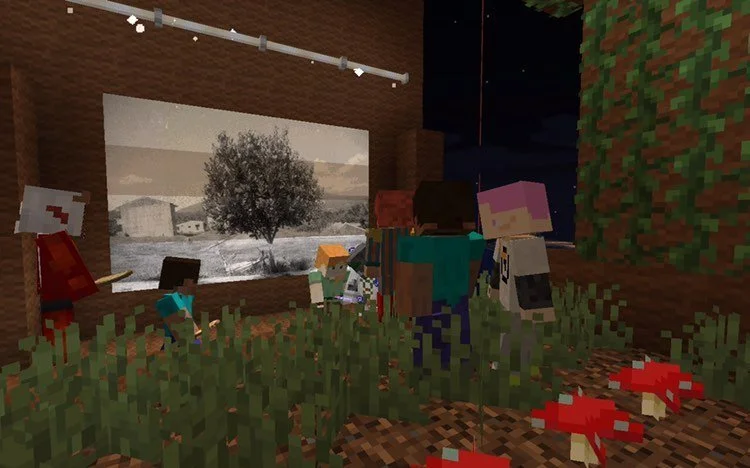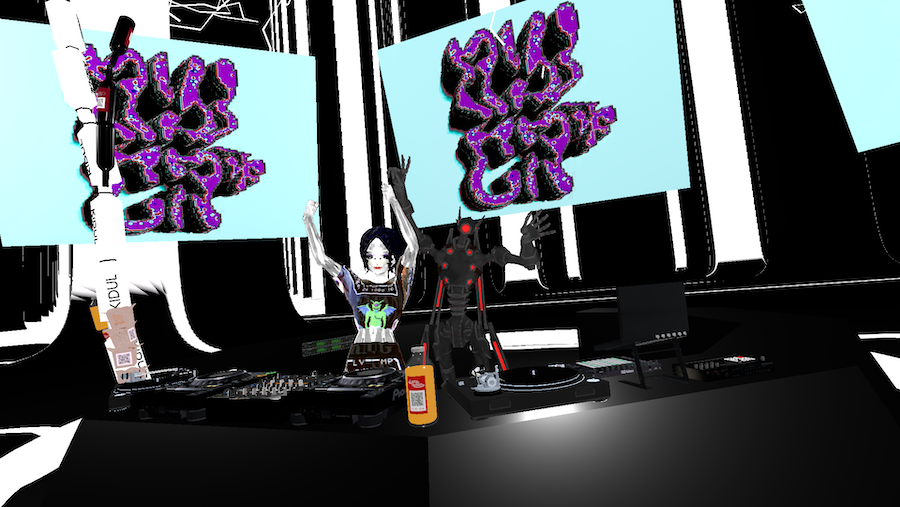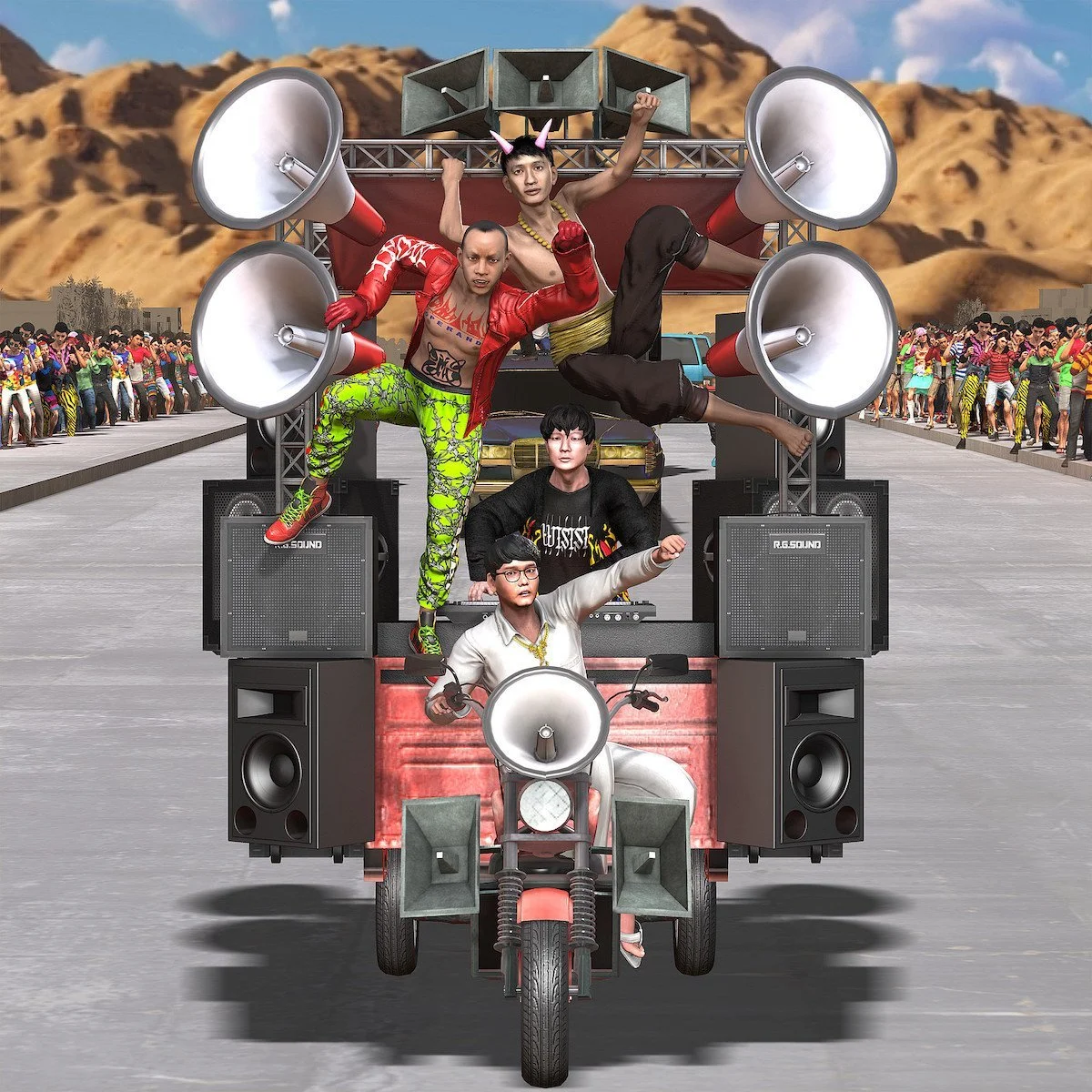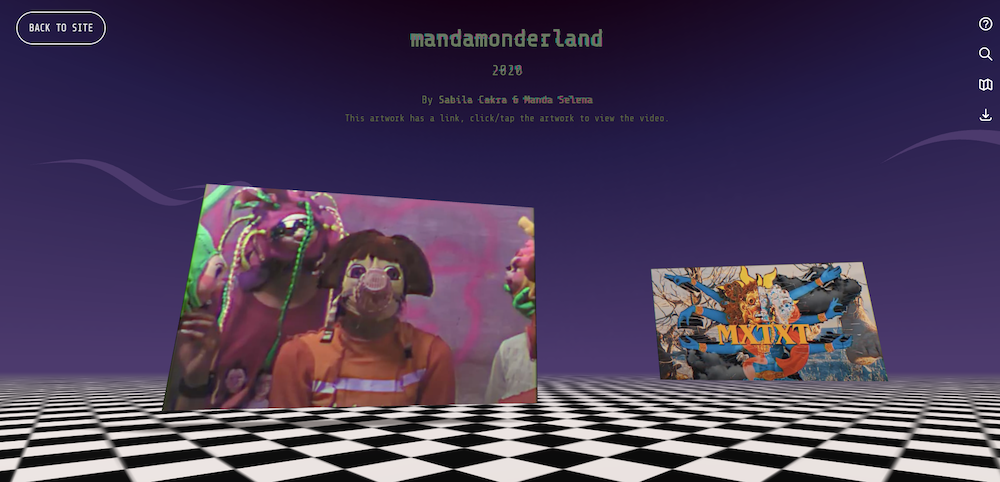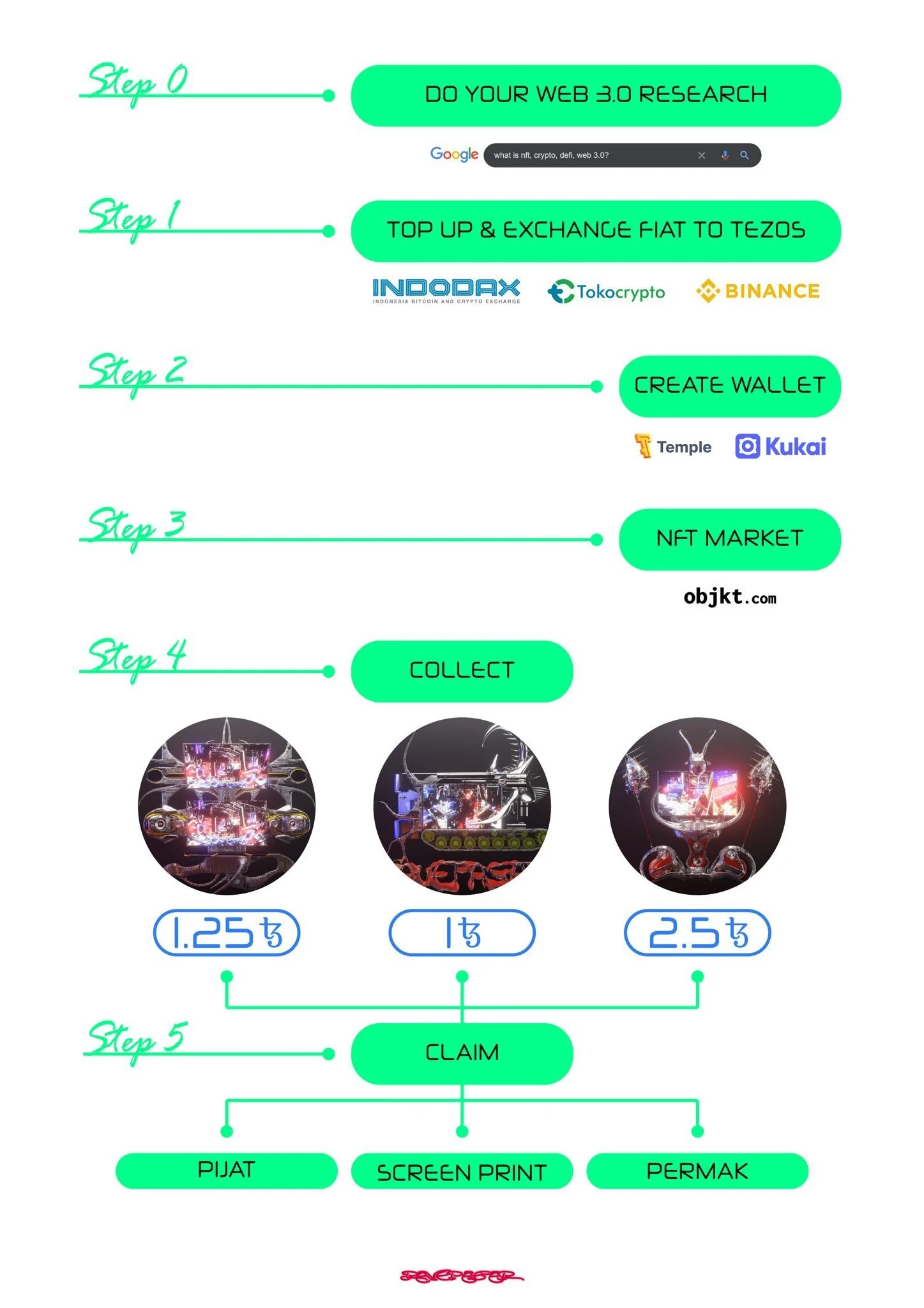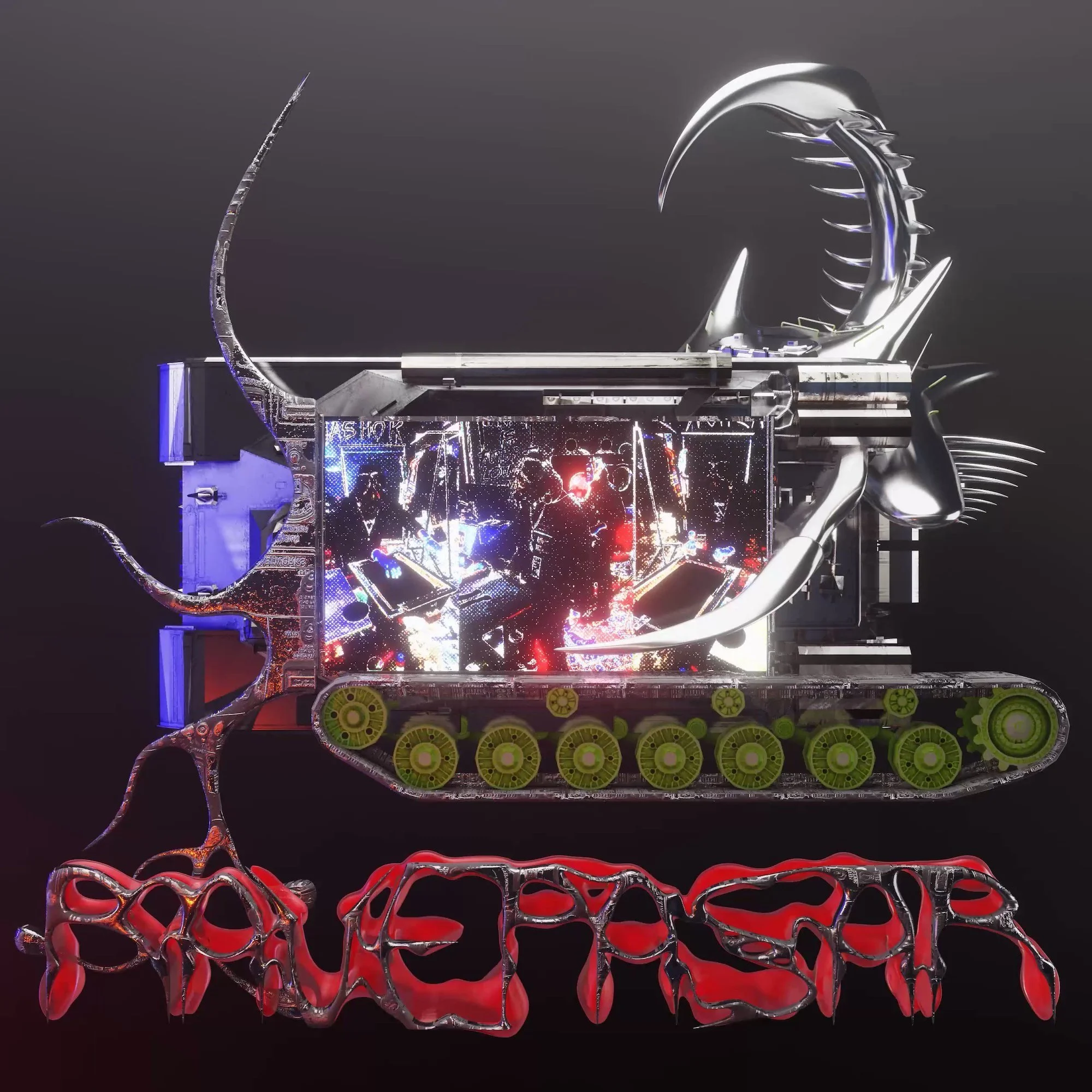Digital Spaces: Entry Points Into the Southeast Asian Net Culture and Rave Scenes
Anthology of Metaverses and more
Para://Site Projects, Internal Server Error at Infinite Summer, Club Matryoshka, 2020, curatorial tour. Image courtesy of Para://Site Projects and Club Matryoshka.
It is curious how it all started. 2020, the year when we expected exciting things to take place, turned its back on us and left the world in what seemed to be an endless pause. As borders were shut and we were locked inside our homes, what more than a few books and the screen to turn my attention to, for a maker of exhibitions like myself? Online initiatives were quick to appear; Weird Sensation Feels Good at ArkDes, Stockholm, was the first virtual vernissage and tour I attended back in 2020. Curated by architectural designer James Taylor-Foster, this exhibition “dedicated to feeling”¹ evoked many points of reflections on how different aspects of reality, including senses, may or may not be translated through virtual context.
Strangely, my curiosities did not channel myself towards any commercial gallery online viewing rooms, but rather towards virtual gigs that presented an outlook of the region’s underground music landscape. This journey was paralleled by co-creation of an interactive 3D space for born-digital art, which encapsulated the energy of an internet subculture within the young Southeast Asians — infused with spirits of experimentality and freedom. Taking these online experiences as points of departure, the following review offers an overview of new possibilities, emerging from internet-based initiatives.
Museums around the world have developed a range of programmes and tools to forge the relationship between art and viewers, and create spaces for social interaction. Despite these attempts, interactivity often remains missing from exhibitions. Some internet-based exhibitions and events have however succeeded in doing so.
Internal Server Error was a virtual exhibition organised by Manila-based art collective Para://Site Projects, held as part of the ‘Infinite Summer’ music festival at Club Matryoshka, “a virtual music club based in Manila and hosted on a private Minecraft server.”² Minecraft is a sandbox game, which means that it was developed with an open world concept that gives players freedom to progress in their own direction, and create freely using unlimited in-game resources. This allowed curators of Internal Server Error to conduct a guided tour that highlighted the “site-specific” works placed in the game environment.
Interaction is further elevated through VRChat’s gameplay. Creation of instanced worlds and interactions between avatars also lie at the heart of this platform, which can very well be described as a metaverse. As its name would suggest, VRChat has extensive support for Virtual Reality accessories such as headsets, hand controllers, and full-body tracking support, enabling voice chat between users, as well as complex motions, ranging from gripping objects in the virtual space, dancing, to audio lip syncing and eye blinking.
Such abilities blur the lines between the user’s physical self and their in-game avatar, adding to the liveliness of experience. With this in mind, as well as the high quality spatial sound and graphics it offers, it is to no surprise that the platform attracts numerous music communities. A video essay by Staszfilm, The Virtual Underground: An Introduction to VRChat's Rave Scene (2021), unveils the rise of clubs and parties on the platform. This film was also part of the 2021 Venice International Film Festival’s special program entitled Venice VR Expanded - which shows how appreciation towards Virtual Reality works extends beyond the contemporary art context.
Musicians Randombrothers and Barbara Pleaser performing at KLUB KIDUL Vol. 1, VR Chat, 2020. Image courtesy of KLUB KIDUL.
In 2021, several Indonesian DJs have performed in the past two volumes of KLUB KIDUL, one of the virtual clubs started on VRChat, spearheaded by a group of Indonesian rave enthusiasts, designed by creative technologists/world builders Coune and Gestalt Intelligence. Though it was not a deliberate attempt to promote the local scene, their lineups very much portrayed the dynamic and highly intense soundscape of Indonesia’s underground music.
One of the DJs to perform was Kasimyn, who, together with Ican Harem, also formed a collaborative project known as Gabber Modus Operandi (GMO). “The duo fuse the challenging sounds of gabber, footwork, grindcore, and noise with a number of uniquely Indonesian sounds.”³ Their underground music intersects modern rave with sounds that Indonesians live with. This allowed it to be enjoyed from various angles; it evokes a familiar feeling to Indonesian listeners, and is fresh and intriguing to international rave enthusiasts.
Gabber Modus Operandi, Rimbawan Gerilya, Siko Setyano, MBELEDOSSS! (EXPLODE!), 2021. Image courtesy of the Artists.
We also witness subculture transcending into virtual space through their recent creation entitled MBELEDOSSS! (EXPLODE!) (2021). This 3D animation video mixtape, made in collaboration with digital artist Rimbawan Gerilya and dancer Siko Setyanto, was seen as part of the 2021 CTM Festival’s Cyberia online exhibition. Designed by Lucas Guterrez, Cyberia was introduced “in a search for the imaginative, expansive, and permeable possibilities of online spaces.”⁴ The experience of visiting its virtual environment stood out for me due to its disorienting aesthetics, which caused the artwork to be hidden.
Revealing the country’s punk aesthetics and DIY culture, the work MBELEDOSSS! (EXPLODE!) (2021) offers “a glimpse of the hope and resilience of a struggling civilization.”⁵ To me, the work echoed the spirit of survival we had in Southeast Asia during the pandemic, in which we relied on our own creativity and the power of community to live on.
Sabila Cakra, Manda Selena (Pinky Gurl), and Toxic Motel, ;AoM 1.0, Anthology of Metaverses 1.0, exhibition view. Image courtesy of AoM and Artists.
Anthology of Metaverses (AoM), founded in 2021 similarly offers a spirit of resilience, aiming to make room for digital art, net art, and new aesthetics art. AoM’s Lead Curator James Ly and I, as co-curator, meant to address the marginalisation and lack of critical perspective to such works in the region. One of the ways we responded to the issue was by curating an online space that puts forward inclusivity and accessibility through its technical and aesthetic choices.
Using simple navigation tools, users could mobilise themselves within the exhibition space to approach artworks closely, and observe them from all possible angles. In a virtual world where area is unlimited and artworks are scalable, finding the equilibrium between space and artwork was a challenge, but part of what it means to curate on the web.
The past two years have undoubtedly opened my mind in curating. The question now lies on whether digital art and experimental music will continue progressing in the online realm, or instead evolve into a hybrid form. It is also a question of how the realities we live with, our ways of seeing, and living conditions – could establish connection with those virtual spaces. Rave Pasar, an annual offline exhibition and music event in Bali, was at the forefront of speculating on how the digital could link to real-world values.
Rave Pasar Map of Utility. Courtesy of Ravepasar.
Thobie Buntaran (Loreng Projekt), Screen Printing Table Tank, NFT. Image Courtesy of Ravepasar and Artist.
Rave Pasar introduced a system in which selected digital artists were commissioned to create NFTs exclusively for the festival. Collectors of these tokens could then show their purchases in exchange for benefits at the actual festival, including traditional massage, screen-printing for t-shirts, and clothes altering services; utilities which have become a popular urban culture in the local context.
I believe that this model is just the beginning of possibilities that lie ahead, towards how digital and real-life tools could co-create spaces for art and music; a hybrid space which will reflect on our lives and subcultures.
“I believe that this model is just the beginning of possibilities that lie ahead, towards how digital and real-life tools could co-create spaces for art and music; a hybrid space which will reflect on our lives and subcultures. ”
This is a winning entry from the third Art & Market ‘Fresh Take’ writing contest. For the full list of winners and prizes, click here.
The views and opinions expressed in this article are the author's own and do not necessarily reflect those of A&M or the prize sponsors.
The writer would like to acknowledge Adam Ariawan for proofreading the submission.
Notes:
ArkDes, “Weird Sensation Feels Good: An Exhibition about ASMR.”, December 22, 2021, accessed March 27, 2022. https://arkdes.se/en/utstallning/asmr-weird-sensation-feels-good/#:~:text=WEIRD%20SENSATION%20F EELS%20GOOD%20is,to%20negotiate%20a%20complex%20world.
As seen on Club Matryoshka’s Instagram bio.
Goethe Institiute, “Gabber Modus Operandi.”, accessed March 27, 2022. https://www.goethe.de/prj/nus/en/ats/21346921.html.
CTM Festival, “CTM.”, CTM Cyberia, accessed March 27, 2022. https://www.ct-festival.de/festival-2021/programme/exhibition/ctm-cyberia.
CTM Festival, “CTM.” "MBELEDOSSS! (EXPLODE!)" by Gabber Modus Operandi x Rimbawan Gerilya x Siko Setyano, accessed March 28, 2022. https://www.ctm-festival.de/festival-2021/programme/exhibition/ctm-cyberia/mbeledosss-explode-by-gabb er-modus-operandi-x-rimbawan-gerilya-x-siko-setyano.

